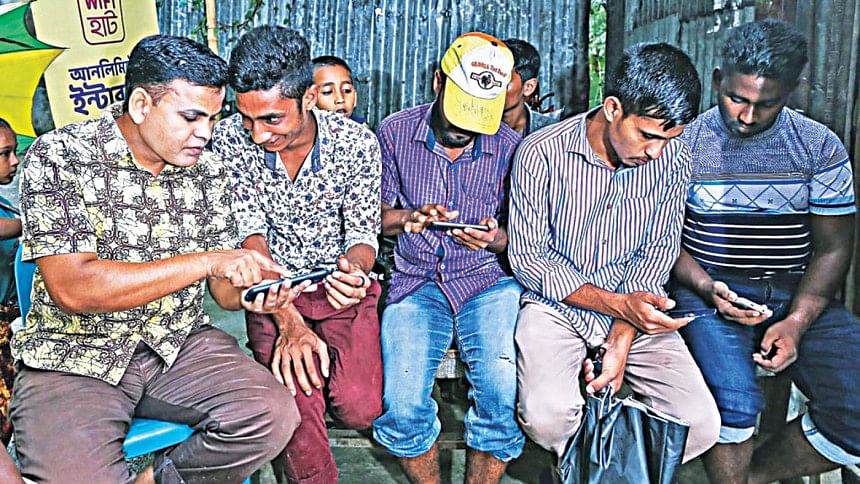Are we ready to tackle digital inequality?

The article seeks to explore the readiness of Bangladesh to rein the persisting digital inequalities. Therefore, it is of great importance to understand the meaning of digital inequalities, the spectrum of digital inequalities, and the extent or depth of such inequalities. All these would help us understand where to focus and how to address the challenges embedded within the digitization process to make Bangladesh Smart by 2041. More importantly, understanding digital inequality would help detect the underlying factors contributing to digital inequality and realize whether we are ready to rein digital inequality in Bangladesh. Today social and economic advancement of any country relies to a great extent on the country's access to modern information and communications technologies (ICTs) like computers, smartphones, and the internet, which play a pivotal role in improving the well-being of the citizens. However, this does not hold such promises for all segments of the population due to the persisting digital divide or digital inequality within a country and Bangladesh is not an exception to this case. While the digital divide focuses mainly on the differences in access to ICTs (i.e., the first-level digital divide), digital inequality refers to the differences in skills of the users (i.e., the second-level digital divide), implying that the high level of digital inequality is a challenging barrier to the digitization process, deployment of digitization process in organizations and businesses and adoption by citizens. Bangladesh dreams of realizing its Smart Bangladesh Vision by 2041 resolving the existing barriers in deployment and adoption through an inclusive manner. Realizing the dream by 2041 would require including the citizens who are lagging behind others in terms of the digitization process. More importantly, digital inclusion would help play a pivotal role in harnessing social and economic development. For the very first, the government of Bangladesh should consider the underlying reasons behind digital inequality for undertaking necessary plans and actions to address the root causes of digital inequality in Bangladesh.

Let's start with a discussion on the digital divide between rural and urban areas of Bangladesh. The government data from Bangladesh Sample Vital Statistics shows that the prevalence of internet usage among the rural population is around 37 percent and it is around 54 percent among urban population, implying a gap of 17 percent. Similarly, it finds that such a gap also persists between males and females by around 13 percent. Moreover, a more acute gender gap in the digital divide also persists within rural and urban areas. These simple statistics imply that approximately half of the population is out of internet usage, which would be a great challenge for the government to bring them under the digital umbrella by 2031. Considering the facts, the government of Bangladesh should set up the visionary milestones of achieving access to the internet by all citizens of the country within 17 years (i.e., 3 percent annual growth of internet coverage with a greater focus on rural areas where digital connectivity such as WiFi or broadband connection is still in scarcity). This would help establish the balance in internet usage between rural and urban areas. However, internet access provisioning in remote villages in rural areas would not be as easy as it is expected. As digital inequality by gender is also a major concern, the expansion of digital facilities should inclusively prioritize women. In order to make the digitization process, the government has introduced "One Country, One Rate", but in reality, it differs charging higher prices in rural areas. The two underlying factors behind the low penetration of internet usage in rural areas include infrastructure and technological resources. However, socioeconomic ability and digital literacy among rural people are thought of as constraints in the digitization process. We can guess that internet access among rural people would move positively with the increase in their incomes. However, a huge investment from the government's end is necessary for provisioning digital literacy, especially among the rural youth so that they can employ themselves starting e-commerce, f-commerce, and outsourcing. In addition to these factors, the cost of internet access is around 6.5 times higher compared to the rest of the world, implying that reducing the cost of the internet might help expand the coverage by bringing internet access to more rural people within their affordability. However, the higher level of current inflation, which is around 10 percent in Bangladesh, would pose a serious challenge as the real income of the underserved rural population falls due to higher inflation.

Living in an era of technological change, led by digital revolution, gives rise to societal discontent if disruptions caused by technological change drive the income and wealth inequality in the country. However, the inclusive socio-economic outcomes resulting from such digital revolution point towards a society with more societal well-being, which requires matching of a country's policies and actions with technological changes favoring the people living in the left tail of the income and wealth distributions. It is evident from empirical evidence that the failure to match policies and actions with technological change may result in slower productivity growth, i.e., slower overall economic growth. Therefore, if Bangladesh wants to reap the benefits of digitization from the viewpoint of societal well-being and reduce digital inequality, it should prioritize rectifying the causes of digital inequality, match the timely policies with actions, and establish the shared dynamics between income distribution and productivity. Last but not least, the elements of digital inequalities include varied forms such as educational, infrastructural, social, economic, and usable design which would require a large volume of activities with huge investments. With a low revenue generation of the government of Bangladesh would pose a serious challenge to undertake necessary actions and this might delay in achieving the vision of a country with digital equality.

 For all latest news, follow The Daily Star's Google News channel.
For all latest news, follow The Daily Star's Google News channel. 



Comments